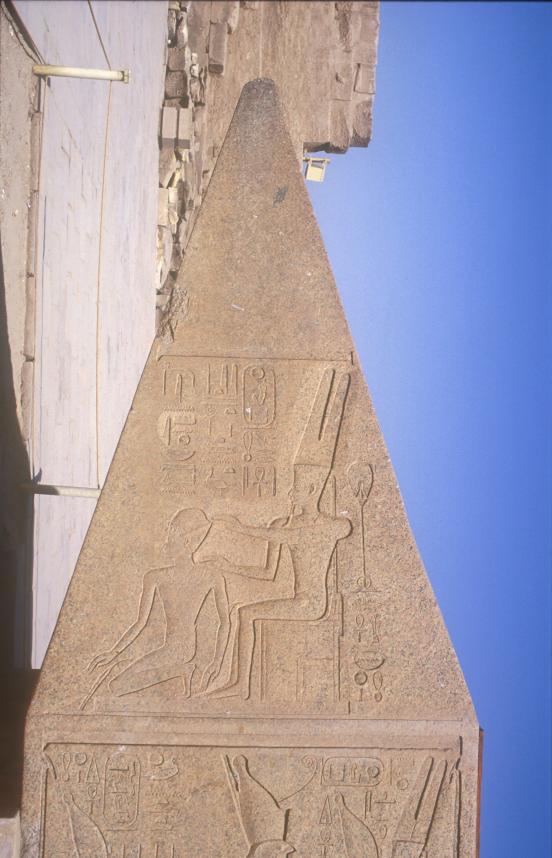Hatshepsut

In the second year of Thutmes III’s reign, while he was still a child, Hatshepsut usurped the title of pharaoh for herself and apparently ruled Egypt until her death twenty years later. In her temple at Dayr al Bahri she justified her actions by claiming divine birth and stated that her father (Amen) had instructed her to take the royal title. This is a poorly known period, and her actions may have been less sinister than some historians have claimed. The fact that the Egyptian term for “king” and the kings’ costumes were masculine nouns meant that Hatshepsut was sometimes shown with masculine features, sometimes with feminine, and is referred to in texts with both masculine and feminine pronouns. Hatshepsut undertook numerous building projects at Thebes. Supervised by her architect Senenmut, these included major additions to the Temple of Amen at Karnak and construction of her own temple at Dayr al Bahri. The former building was fronted by two huge obelisks, while the latter building is considered one of the masterpieces of Egyptian architecture and its “Punt reliefs”--scenes of a trading expedition she sent to what may be modern Somalia--are among the most interesting of New Kingdom reliefs. It is not known how Hatshepsut died, but after her death, her names were erased from her monuments and she is deliberately omitted from ancient lists of Egyptian kings. Some scholars believe this is proof of a deliberate campaign to erase her memory. Hatshepsut’s tomb, KV 20, is an unusual, steeply-sloping series of curving corridors cut into the cliffs immediately west of her Dayr al Bahri temple. The tomb was discovered by Howard Carter in 1903. No trace of her body was found there, but two sarcophagi, one for Thutmes I, another for Hatshepsut, lay inside. A second tomb, cut high up in a cliff south of the Valley of the Kings in the Wadi Sikkat Taqa az-Zayid, may be a tomb cut for her before her accession to the throne.
